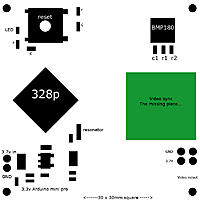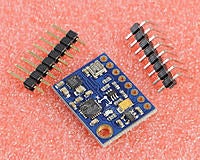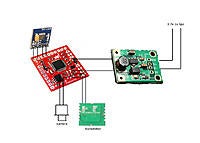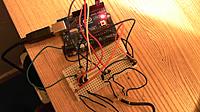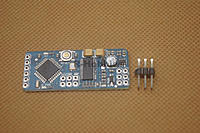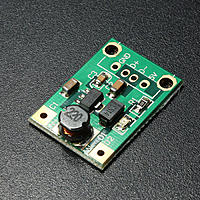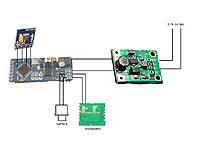Here's my current position using the BaroneOSD sample code here: http://www.elenafrancesco.org/old/arduino/baroneosd/
For some reason, it doesn't display on just one line. No idea why, could it be a PAL/NTSC conflict? Or something else? hmmm...
For some reason, it doesn't display on just one line. No idea why, could it be a PAL/NTSC conflict? Or something else? hmmm...



